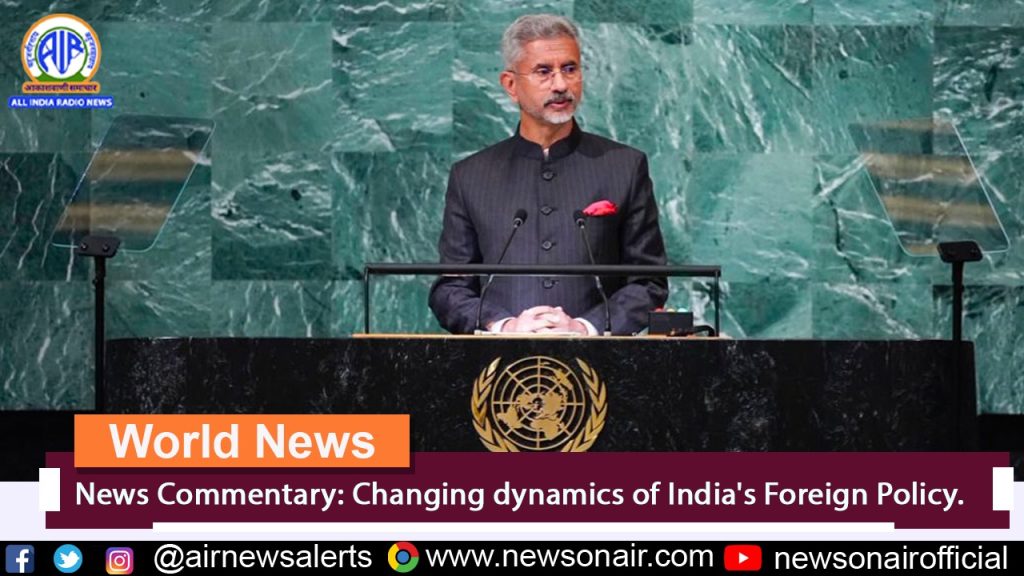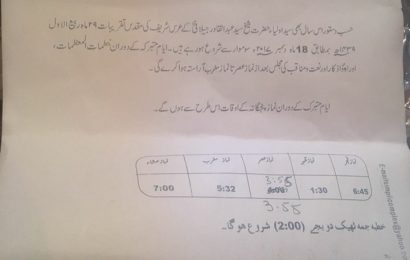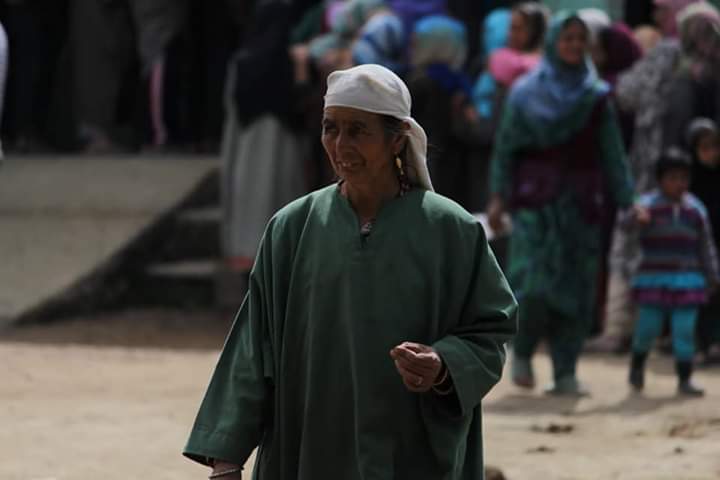India’s foreign policy: the beginning of new era
Mir Sabeen Gulrez
Soon after its independence in 1947, Indian foreign policy makers had to deal with an ideologically divided world. Western (liberal-capitalist) and Eastern (communist) blocs were led by the United States of America (USA) and former Union of Soviet Socialist Republics (USSR) respectively. Instead of joining any of the two blocs, India along with many of the then newly independent colonies established the Non-Aligned Movement (NAM) in 1961, which became a voice of the developing countries at multilateral forums. The Cold War (1947-1991) based World Order crumbled with the disintegration of the former USSR in 1991. The end of the Cold War made many countries, including India, to re-think their foreign policy and adjust their economic structures. In the immediate post-Cold War years, India took political steps to improve its relationship with the USA, Western European countries, and China. In 1991, India also adopted a new economic policy based on liberalisation, privatisation and globalisation.
In the 30 years after India made a major shift in its foreign and economic policy much has changed in global politics. To secure its interests in a changed world India has deliberately, or out of compulsion, made certain adjustments in foreign policy. However, some of the basic tenets of India’s foreign policy remain unchanged, though modified from time to time to achieve the country’s interests.
Personality wise, the first prime minister of India, Jawaharlal Nehru, was considered a chief architect of Indian foreign policy in early years of India’s independence, and Nehruvian policies endure. However, successive prime ministers, including those who led coalition governments, have played their part in shaping Indian foreign policy. Highlighting the role of a leader and political leadership, and changes in the Indian foreign policy after Narendra Modi was elected into power in 2014, some scholars started talking about a ‘Modi Doctrine’, and how Modi’s foreign policy is ‘different’.
Ganguly observes that, although Modi has made certain departures from the past, he has not ‘fundamentally altered the orientation of India’s foreign policy’.
As in the past, one of the major concerns and challenges to Indian foreign policy in present times is: how to deal with China? Political tensions between the USA and China, and growing Chinese assertiveness in South Asia have a major impact on India. The Modi years have witnessed serious political and military tensions between India and China. In 2017 Indian and Chinese soldiers were engaged in a military stand-off for 73 days at Doklam in Bhutan. More seriously, in 2020 Indian and Chinese soldiers clashed in Galwan valley in Ladakh when 20 Indian and, as acknowledged by China in 2021, four Chinese personnel lost their lives .
Since then several rounds of talks between Indian and Chinese commanders, and officials have taken place; yet the tension at the border has not subsided. Interestingly, in this period trade between the countries has exponentially increased. In the first nine months of 2021 India’s trade with China touched US $90 billion which is an increase of 49% over the previous year. This trade is, however, balanced in favour of China.
Primarily to deal with the Chinese challenge, India is strongly promoting a Quadrilateral Security Dialogue (QUAD) which also includes Japan, the USA, and Australia. Chinese foreign minister Wang Yi termed QUAD a ‘huge security risk’ which has the potential to ‘stir confrontation among different groups … to maintain the dominance and hegemonic system of the US’ .
This section of the special issue analyses various aspects of India’s foreign policy in the past 75 years. In no particular order, it has an article by Amit Ranjan which looks at how the anti-colonial ideology of Nehru shaped India’s foreign policy in the formative years. Those policies guided the successive prime ministers of India. Despite paradigmatic shift in the Indian foreign policy in 1990s, Nehruvian principles have not been entirely given up. Even the most ‘non-Nehruvian’ Prime Minister of India, Narendra Modi, has not been succeeded to steer Indian foreign policy away from shadows of Nehruvian and Nehruvianism.
Another article by Smruti S Pattanaik, recognises that India’s neighbourhood constitutes the core of the country’s foreign policy. It is entwined with the security and stability of India’s periphery which is home to diverse ethnic groups with familial ties and socio-cultural affinities that often criss-cross physical borders. A part of such connections was ruptured by the 1947 partition of the subcontinent. The majoritarian conception of nation-building in the post-colonial states detested shared socio-cultural commonality and emphasised an ‘exclusivity’ of their national identity which only sharpened that rupture. This attitude degenerated into a mindset characterised by mistrust and suspicion preventing co-operation that could have optimised the economic potential of the region. India’s over-emphasis on its security linkages with its neighbours made it extra-vigilant to the domestic politics and foreign policy objectives of its South Asian neighbours. Neighbours felt that such vigilance impeded on their sovereign foreign policy choices and constrained them in shaping their internal politics. As a result neighbours resented India. India’s neighbourhood policy, however, has undergone several shifts – it is slowly moving away from an overtly security-centric approach towards forging development partnerships with its neighbours as a means to ensure security.
Aseema Sinha’s article builds upon a vast literature and rarely used India’s Ministry of External Affairs Annual Reports. Sinha argues that India’s foreign policy actions through its 75 years are not unique or novel by any means but that any assessment of them must include an analysis of changing global structures and how they affect domestic imperatives. Analytically, an ‘inside-outside’ perspective, usually deployed in studies of India with a focus on India’s ideas and actions, must be combined with an ‘outside-in’ analysis. Such an outside-in analysis places India in the context of global structures across four phases of foreign policies [1947–1989; 1999–2000; 2000–2016, 2016–2021]. Global aspects must be analysed by paying attention to interactions between global economic and security structures, ‘multiplex’ features and ‘weaponised interdependence’ that make statecraft urgent and relevant.
Jivanta Schottli’s contribution looks at the idea of the ‘Indian Ocean Zone of Peace’ (IOZOP) that emerged during the 1950s and 60s, formalised in 1972 with the creation of a United Nations Ad Hoc Committee. India’s maritime strategy during the Cold War towards the major powers was refracted through the discourse and institutions of non-alignment such as IOZOP. In recent times, the emergence of the ‘Free and Open Indo-Pacific’ as a strategic construct that is shaping India’s maritime outlook marks a radical change in terms of power projection and political engagement. The article considers both the vectors and agents of change in India’s maritime strategy over time.
Another valuable contribution comes from Rajan Kumar. It talks about India’s multilateralism which, as the article finds, has undergone three distinct phases. A high-decibel universalism based on morality and idealism marked the first phase (1947–1961). India was favourably disposed to the UN during this period. A gradual shift in India’s strategy occurred in the second phase (1961–1991) with attempts at ‘regime shifting’ or what may be referred to as ‘parallel-institutionalisation’. The Non-Alignment Movement (1961) and G-77 (1964) were constituted during this period. The third phase of India’s multilateralism began after the end of the Cold War in 1991. NAM’s relevance became suspect with the cessation of bipolar politics. India embraced all sorts of organisations during this period. In the last two decades, it has joined four notable organisations, viz., the G20, the QUAD, BRICS (Brazil, Russia, India, China, and South Africa) and the Shanghai Co-operation Organisation or Shanghai Pact. India refers to it as a policy of multi-alignment. India’s intense interactions at the systemic level are in stark contrast to its low engagement at the regional level. It is yet to develop a robust multilateral framework in South Asia.





